The NVIDIA GeForce GTX 970 Review: Featuring EVGA
by Ryan Smith on September 26, 2014 10:00 AM ESTMeet The EVGA GeForce GTX 970 FTW ACX 2.0
Our sample for today’s article is EVGA’s top-tier GTX 970 card, the EVGA GeForce GTX 970 FTW ACX 2.0, or more commonly known as simply the GTX 970 FTW. The GTX 970 FTW builds on the standard GTX 970 design by incorporating EVGA’s latest iteration of their ACX open air cooler, the ACX 2.0, and pairing that with a very sizable factory overclock.
| GeForce GTX 970 Specification Comparison | ||||
| Reference | EVGA FTW | |||
| Core Clock | 1050MHz | 1216MHz | ||
| Boost Clock | 1178MHz | 1367MHz | ||
| Memory Clock | 7GHz GDDR5 | 7GHz GDDR5 | ||
| VRAM | 4GB | 4GB | ||
| TDP | 145W | 145W | ||
| Cooler | N/A | Double Slot Open Air | ||
| Length | N/A | 9.5" | ||
| Warranty | N/A | 3 Years | ||
| MSRP | $329 | $369 | ||
Compared to the reference GTX 970 with its 1050MHz base clock and 1178MHz boost clock, the GTX 970 FTW ships with a base clock of 1216MHz and a boost clock of 1367MHz. This is a 166MHz (16%) base clock increase and 189MHz (16%) boost clock increase, making this one of the most heavily factory overclocked cards we’ve seen in some time. As we’ve discovered with GTX 980, NVIDIA’s reference clocks leave quite a bit of overclocking headroom on the table, and as a result EVGA is tapping into that headroom for their factory overclocked models. Meanwhile the memory clock with its far more limited overclocking headroom remains unchanged on the GTX 970 FTW at 7GHz.
Starting as always at the top, from a high level overview the GTX 970 FTW is a fairly typical dual fan open air cooler, which along with triple fan variants have become the de facto standard for open air cooling on mid-to-high powered video cards. The use of an open air design allows for very good temperature control and acoustics in exchange for offloading much of the cooling work onto the chassis itself.
Since this is the first GTX 970 we’ve looked at, it’s worth noting that GTX 970 in general occupies a very odd spot as far as picking the optimal cooler is concerned. High-end high-powered cards will often use blowers (or at least make them an option) for chassis compatibility and space (multi-GPU) reasons, while low-powered cards will be entirely open air because the heat load they present is relatively limited in the grand scheme of things. Then in the middle you have cards such as the GTX 970, whose 145W TDP is far less than some of these high-powered cards but still more than even an Intel Core i7-5960X.
145W of heat is still going to be enough to stress some chassis designs (especially many OEM designs) while for other chassis designs it’s only a fraction of what they can handle. What this means is that there is no ideal cooler at this level; a blower is generally not necessary, but an open air cooler is not going to be universally compatible either. EVGA as it turns out is going to be covering both possibilities – they are one of just two partners offering models with blowers – so with the exception of the open air cooled GTX 970 FTW, most of EVGA’s other GTX 970 cards have both an open air option and a blower option.
In any case, for the GTX 900 series EVGA is introducing the first of their ACX 2.0 coolers. ACX 2.0 is the latest iteration on EVGA’s open air ACX cooler, which we first saw just over a year ago on EVGA’s GTX 780 Superclocked. The original ACX cooler was an effective though none the less fairly typical twin fan cooler, delivering the kind of low load noise levels and temperatures that these cooler styles have come to represent, while EVGA went the extra mile on construction with a few consistent additions such as the use of double ball bearings on the fans.
For the ACX 2.0 cooler EVGA has focused on further optimizing their cooler design for better performance, including in ways we weren’t expecting. From a cooling performance standpoint EVGA has increased the number of fins per fan to 11 to improve airflow and simultaneously tweaked the design of the blades to make them more swept to reduce noise. However what was more surprising was that EVGA has also been redesigning the fan motors as well, and not just for noise considerations but for power considerations as well. In fact all of EVGA’s design tweaks for ACX 2.0 ultimately fold back into reducing power consumption.
The focus on power consumption for a cooler certainly sounds odd at first, but in reality it’s an excellent reflection of the state of the PC video card market and how insanely competitive NVIDIA’s partners are. Because fan power is calculated as part of the card’s overall TDP budget on NVIDIA-approved designs – 145W in the case of GTX 970 – whatever power is taken up by the fan is therefore unavailable for the GPU. When coupled with a TDP limited design – a description that fits GTX 970 to a T – this means that even shaving off a couple of watts of power from the fans can free up enough power for another boost bin or two, and so for ACX 2.0 this is exactly what EVGA has done.
| EVGA: ACX 2.0 Performance at Fixed Acoustic (36dB) | ||||
| ACX 2.0 | ACX | |||
| Fan Speed |
2000 RPM
|
2300 RPM
|
||
| Power |
0.92W
|
2.05W
|
||
| GPU Temp |
64C
|
66C
|
||
| EVGA: ACX 2.0 Performance at Fixed Acoustic (47dB) | ||||
| ACX 2.0 | ACX | |||
| Fan Speed |
2900 RPM
|
3300 RPM
|
||
| Power |
2.65W
|
6.10W
|
||
| GPU Temp |
58C
|
58C
|
||
The fact that we’re even talking about optimizations in the couple of watt range on a 145W card is admittedly absurd, but again it goes to show the state of the market. As EVGA argues, their low power fan design means better performance and better overclocking than competing cards without these optimizations, and in this case they are technically correct if only marginally so. Still, with a number of NVIDIA partners using similar dual fan designs, any edge EVGA can take in design and benchmark results is going to be worth it to them. And for end users? With Maxwell using 13MHz per boost bin, these power savings would translate to a consistent but highly limited 1-2% performance improvement.
Moving on, while it’s not present in the initial retail units and was not available in time for our review, EVGA tells us that they are going to be implementing zero fan speed idling on the GTX 970 FTW in the near future. This idea, first popularized by Asus in their Strix line of video cards, is based around the concept of shutting down the fans entirely when the card is idling or otherwise operating at low enough temperatures that active cooling is not necessary. By cutting the fans during idle, the card is functionally turned into a passive card that makes no noise, offering even better idle noise characteristics than today’s coolers.
Cooling apparatuses that switch between active and passive cooling are not new in the PC space – your laptop has done this for years – but this is something that until very recently has never been viable on high-end video cards. With GTX 900 series cards drawing sub-10W at idle, it’s finally practical to run these cards with passive cooling at idle, and this is exactly the direction that Asus and now EVGA are going. Meanwhile since this feature is not currently enabled on the GTX 970 FTW we’re not in a position to comment on it, but if EVGA can replicate Asus’s success here then we are looking forward to trying it once the updated vBIOS becomes available.
Update 9/26: While it's still under development, EVGA has given us an early copy of their zero fan speed idle vBIOS for testing, and we can confirm it's working. Please see our Power, Temp, & Noise section for more details
Fans aside, the rest of the GTX 970 FTW’s cooling apparatus is typical of cards in this class. EVGA uses an aluminum heatsink that runs the entire 9.5 inch length of the card, and through which runs a set of 4 heatpipes. These heatpipes in turn run through an aluminum baseplate that makes contact with the GPU, which provides heat transference between the GPU and the heatpipes.
There is no active cooling of the GDDR5 RAM nor of the VRMs on this card, with both components cooled entirely by any airflow that makes it through the heatsink. For a 145W card VRMs cooled without a heatsink is not unexpected, and like the GDDR5 RAM the heat output is low enough that it should be fine as long as it receives constant airflow when under load.
Looking at the PCB itself, the PCB is strongly reminiscent of the GTX 760 reference PCB, which like EVGA’s card puts the vast majority of discrete components at the front of the card. While we don’t have an EVGA GTX 760 on hand, given the identical memory bus and lower power requirements we wouldn’t be surprised if these PCBs were nearly identical. In any case, EVGA tells us that the FTW version of their GTX 970 implements an additional VRM to allow for higher voltages, though we don’t have a non-FTW card to compare it to. Otherwise the GTX 970 uses a stretched version of this common PCB, with EVGA using the far portion of the card (beyond the PCIe sockets) for a few more discrete components. The GDDR5 VRAM itself is split between the front and back, with 4 modules on either side.
Switching over to the back side of the PCB, along with the 4 GDDR5 VRAM modules we also find EVGA’s last major feature for the GTX 970, which is triple BIOS support. Primarily intended for those users looking to overclock their cards through BIOS modifications, EVGA offers 3 BIOSes on this card that can be accessed through a switch on the back of the card. Unlike most cards with switchable BIOSes, this switch (labeled SW1) is extremely small and out of the way, so you won’t be able to find it without specifically looking for it. Even then you’ll need a small tool of some kind (e.g. #00 Phillips screwdriver) to actually manipulate the switches. Multiple BIOSes are an uncommon sight on NVIDIA cards, so this makes the GTX 970 FTW one of the few NVIDIA cards we’ve seen over the last few years with this feature.
Moving on, the overall build quality of the card is very good. Though it can’t match the overall all-in-one design of a blower, EVGA has taken care to account for both the needs of the ACX cooler and the PCB in designing this card. The PCB features a metal reinforcement plate that covers the far end and is screwed down on either side, keeping this segment of PCB from undergoing any flexing. Between that and the structural support provided by the heatsink itself, the card is as solid as any open air card could hope to be. Meanwhile the ACX 2.0 shroud is made out of a thick plastic and screwed to the heatsink at several points, so there is no flexing or bending of the shroud either.
Unlike the GTX 980, EVGA’s GTX 970 FTW is still using the older NVIDIA display I/O standard of 2x DL-DVI, 1x HDMI 2.0, and 1x DP 1.2. This card does support HDMI 2.0 since that feature is driven by the underlying GPU, but otherwise you’re looking at the same I/O options as on the GTX 600 and GTX 700 series, which means driving a G-Sync Surround setup will not be an option here.
Along with the aforementioned display I/O connections, at the top of the card you’ll find a pair of SLI connectors and a pair of 6-pin PCIe power sockets. Despite the presence of the PCIe power sockets this is still a 145W TDP card, so the use of 2 sockets provides some additional buffer room along with the card’s 110% (160W) TDP overclocking limit.
Rounding out EVGA’s package, the GTX 970 FTW also includes the company’s standard overclocking software suite. Composed of EVGA PrecisionX and EVGA OC ScannerX, these utilities provide for overclocking/monitoring and stability checking respectively.
Just launched for the GTX 900 series is PrecisionX 16, which is the first supported release of PrecisionX built in-house after the company discontinued its relationship with RivaTuner author Alexey Nicolaychuk. As a result of this behind-the-scenes change in development, PrecisionX has undergone a fairly major overhaul in replacing the RivaTuner bits with new code. None the less EVGA has done a good job of retaining all of the utility’s major features, so along with overclocking support through NVAPI it offers a suite of OSD and monitoring options. On that note, next week we will be taking an in-depth look at PrecisionX 16 along with a collection of other overclocking utilities as part of a previously scheduled round-up of overclocking utilities, so be sure to stay tuned for that.
For product support the GTX 970 FTW comes with EVGA’s standard 3 year transferable warranty, with individual 2 or 7 year extensions available for purchase upon registration. The card also qualifies for EVGA’s step-up upgrade program upon registration, so it can be upgraded for a more expensive card within 90 days for just the price difference.
Finally, EVGA has set the MSRP on the GTX 970 FTW at $369, which is $40 (12%) over the MSRP for a reference GTX 970. EVGA offers 3 tiers of factory overclocked cards, so as the highest tier card it also commands the highest price. From a hardware perspective EVGA’s factory overclock is not so high as to be unreachable on reference cards, but in this case as always, buying factory overclocked means paying more to avoid the overclocking lottery.


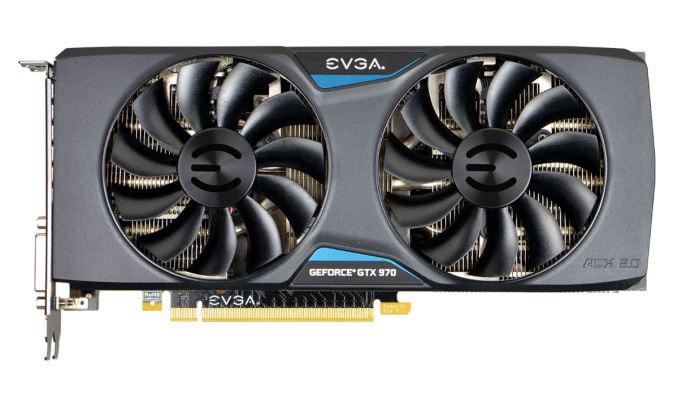
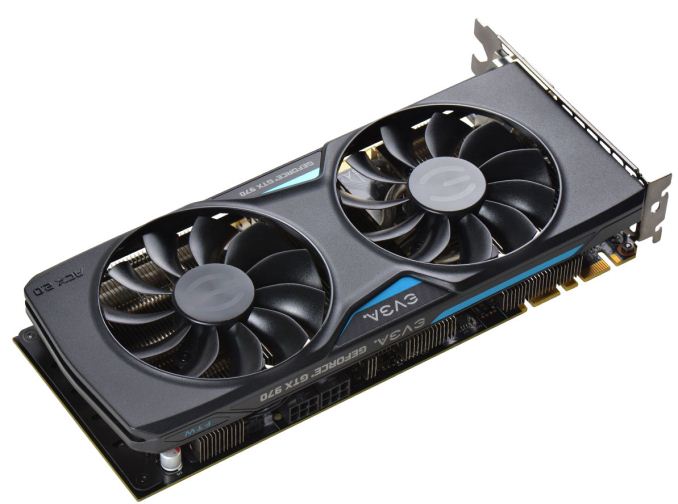
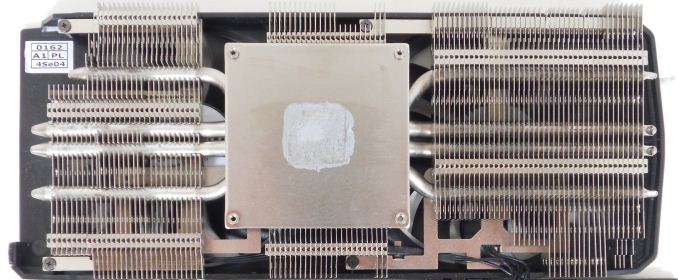
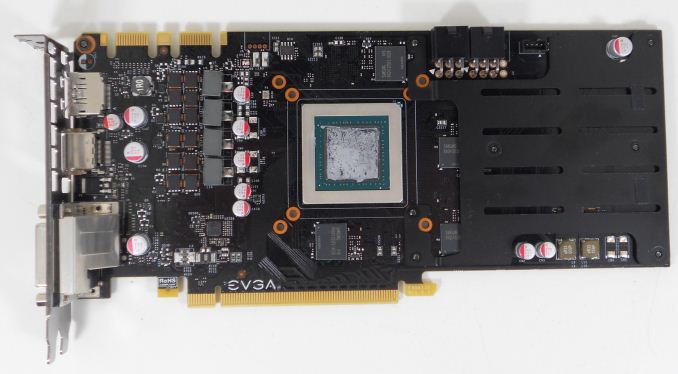
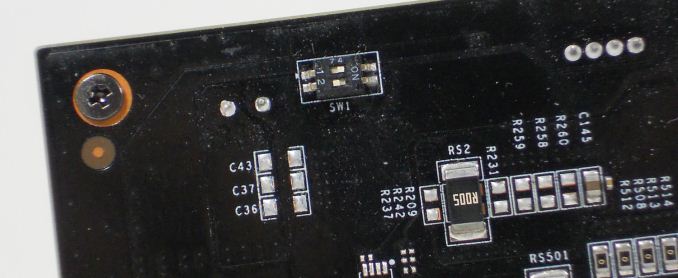

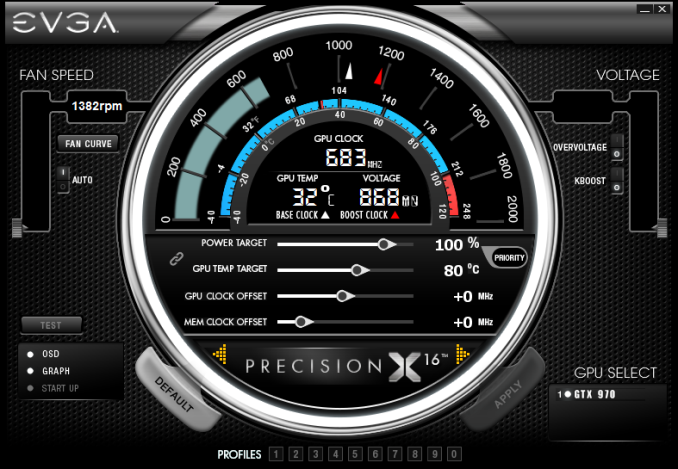













155 Comments
View All Comments
LancerVI - Saturday, September 27, 2014 - link
Looks good! Mostly a side-grade for my 290's, but I knew that already. Probably the best purchase I made in a while, those 290's are gonna last me a bit. May have to ebay a 3rd for some tri-fire. I'll go nVidia next round depending, but I'm really impressed with the 980/970, but 290's right now are a steal!Impulses - Sunday, September 28, 2014 - link
Did the prices drop significantly? I'm scared to look, I got mine for $350 (after rebate) and $360 about a month ago, didn't see anything priced that low immediately after the 980/970 launch but... You'd think AMD would now have to at least match 970 pricing with the 290 in order to sell any at all.Impulses - Sunday, September 28, 2014 - link
FWIW, I did think the price I paid for the 290s was pretty terrific and haven't regretted it yet... When looking at SLI vs CF tests the performance gaps from game to game are even narrower, a huge AMD price drop would be slightly irksome tho I understand it's bound to happen. OTOH, being so close to the holiday season I doubt we'd see any good sale prices atop any price drops or beyond the 980/970 price points.Death666Angel - Saturday, September 27, 2014 - link
The 980 and 970 make me excited for what nVidia (and hopefully AMD) has in store for 20nm next year. I'm not going to upgrade from my water cooled 7970 (35% chip and 20% memory OC) for another 28nm GPU, even if nVidia managed to squeeze a lot out of the process.StormFuror - Saturday, September 27, 2014 - link
Wow, I didn't expect the 970 to pull up stats like this compared to the 780. I don't know why, lol. The power consumption from the horsepower this card throws down is rather impressive compared to AMD's R9's. I may have to get one of these. I'm stuck with one monitor @ 1920x1080. This card will give me 60 FPS in just about everything it seems, probably over kill. But this seems like it'll hold me over until I have to do a complete new rebuild down the road(when I upgrade to 4k). I've got a couple years :)eek2121 - Sunday, September 28, 2014 - link
I know AT's benchmarks portrays the Radeon 6970 as 'slow as balls' when it comes to gaming recent titles, but as someone who games more than most (on a 1080p monitor), i still find very little incentive to upgrade. Maybe if i gamed at higher resolutions.... Haven't really encountered a game (worth playing) that doesn't run on ultra settings in 1080p. Then again, steam has been shifting my dollars away from top tier games towards indie games for a while now. I own 425 games on steam and all of them give me no issue on my 'old' graphics card. Not knocking the new geforce cards at all....just wish developers would push the envelope a bit more.TiGr1982 - Sunday, September 28, 2014 - link
Wel, old VLIW4-based HD 6970 is, say, something around 1/3 (33%) slower than GCN-based R9 280 aka HD 7950 Boost (which I have, BTW). But I believe that 6970 is more or less still good enough for 1080p, and, besides, probably the drivers for HD 6970 are pretty mature since HD 6970 is nearly 4 years old now (plus, Trinity and Richland also have VLIW4-based GPU, just 1/4 of HD 6970's Cayman GPU).just4U - Sunday, September 28, 2014 - link
The biggest thing for me is this..." For much of the last year NVIDIA has been more than performance competitive but not price competitive with AMD."
------
That's been a major bone of contention with me. They corrected pricing which was very much in line and competitive during the 460-80 days. Then went out to lunch thru the 560-80 era and marginally came back (almost not quite..) during the 660-80 only to head way out to lunch again with their 7x series. It boggles the mind and makes it hard to purchase when AMD is offering great deals on their end /w similar performance.
hamiltus - Sunday, September 28, 2014 - link
So my main question is if the GTX 970 is a good upgrade from the GTX 670 for 1440p/4K gaming?coldpower27 - Sunday, September 28, 2014 - link
This is a solid upgrade, just thinking if this is worth it over GTX 670 as well. Slightly more power consumption for much greater performance and similar idle performance numbers.970 has a nice ring to it. :)